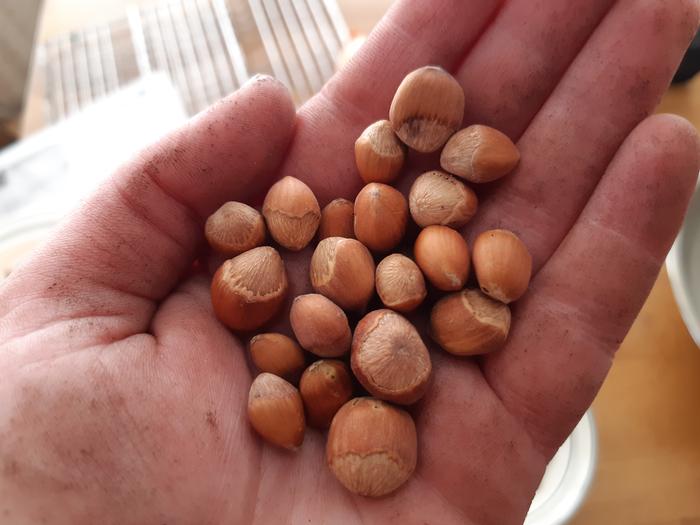
 15
15






 1
1




 3
3




 2
2




JayGee




 8
8




 3
3




 4
4






 3
3




 1
1












Tom Worley wrote:Melissa- mine are part of foundation plantings on the north and east side of my house in partial shade. They're American Hazelnut, and they started producing at 4-5 years. I haven't tried cultivating European varieties; they may need more sun.
 2
2




Melissa Taibi wrote:Are hazelnuts okay with some shade? I have several that are due to be planted in my native food forest garden but the way I have it planned out so far, most, if not all, of the hazelnuts will be fairly shaded (at least they will when the bigger things get to mature size). My understanding is that hazelnuts are understory plants and so I assumed shade was okay... but looking at some of these comments, it seems they may be much slower to grow and produce in the shade. Should I reevaluate my food forest layout? For reference, I'm in the northern hemisphere and there is existing woods/thicket to the south of my planting area so planting on the south side of the plot doesn't necessarily mean more sun. Think the hazelnuts will be okay with the kind of shade they'll get here? I did try to keep everything out from under the canopies of their neighbors considering average mature sizes.
 3
3




Melissa Taibi wrote:Are hazelnuts okay with some shade? I have several that are due to be planted in my native food forest garden but the way I have it planned out so far, most, if not all, of the hazelnuts will be fairly shaded (at least they will when the bigger things get to mature size). My understanding is that hazelnuts are understory plants and so I assumed shade was okay... but looking at some of these comments, it seems they may be much slower to grow and produce in the shade. Should I reevaluate my food forest layout? For reference, I'm in the northern hemisphere and there is existing woods/thicket to the south of my planting area so planting on the south side of the plot doesn't necessarily mean more sun. Think the hazelnuts will be okay with the kind of shade they'll get here? I did try to keep everything out from under the canopies of their neighbors considering average mature sizes.
 1
1





|
The only cure for that is hours of television radiation. And this tiny ad:
The new kickstarter is now live!
https://www.kickstarter.com/projects/paulwheaton/garden-cards
|







